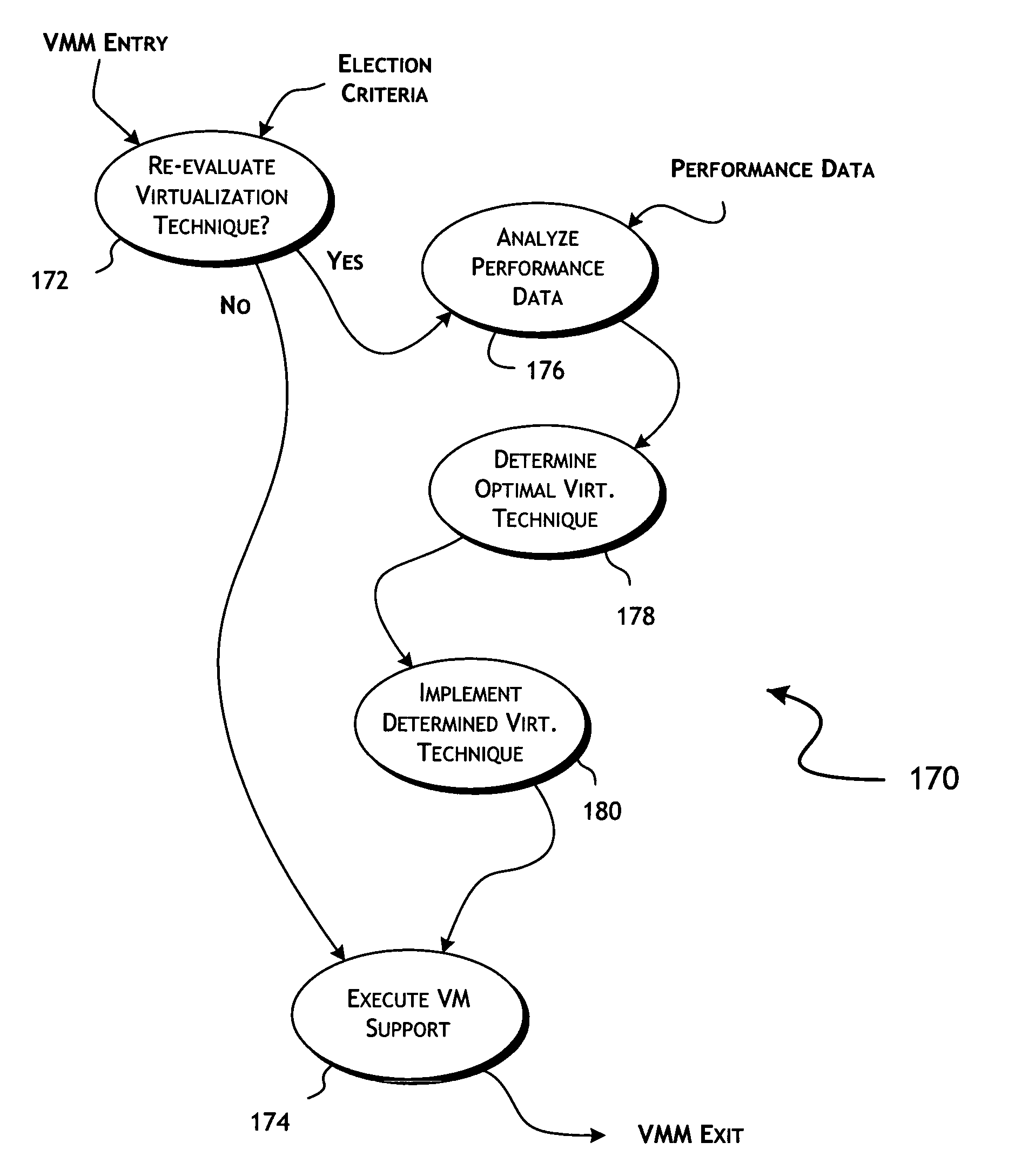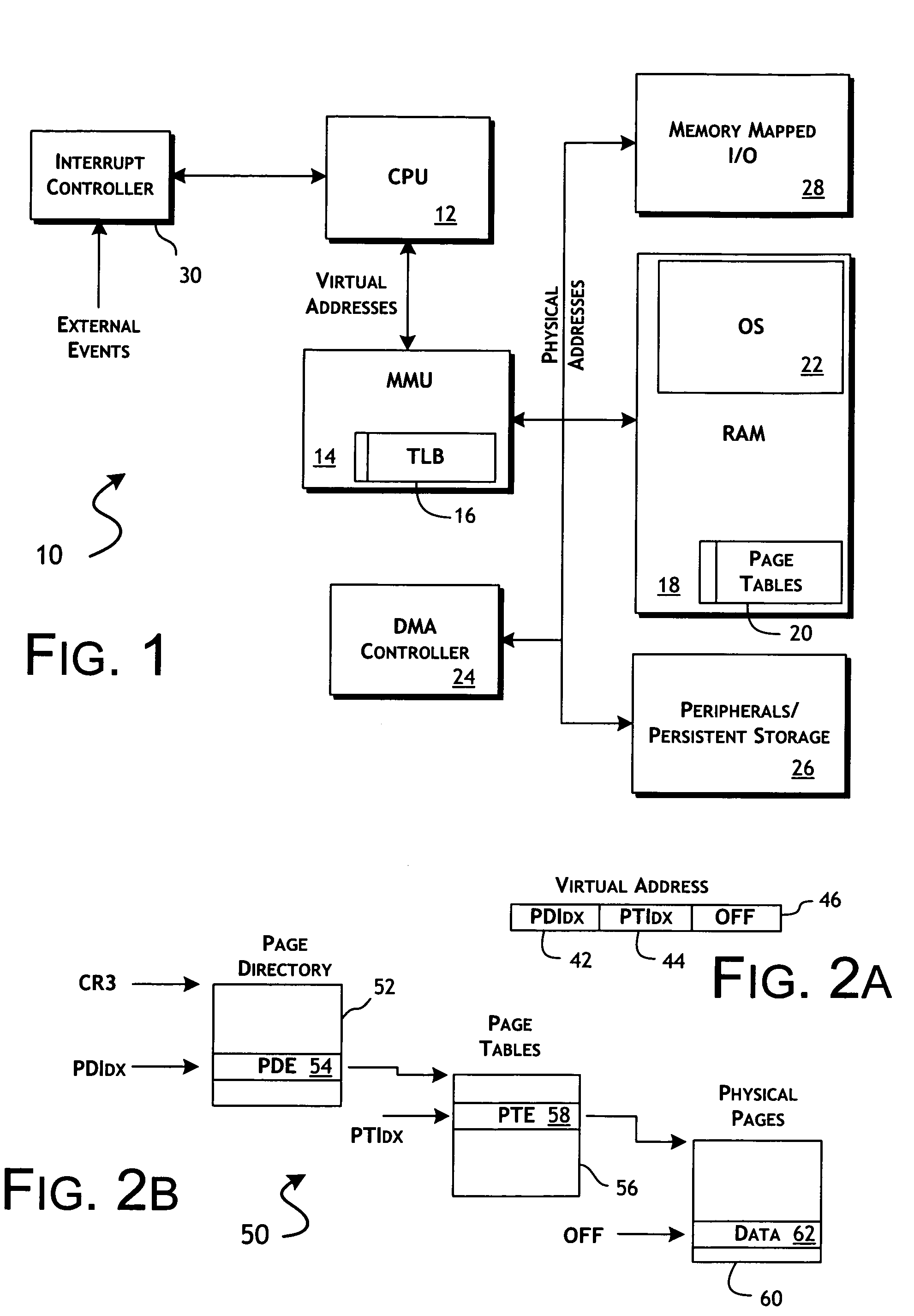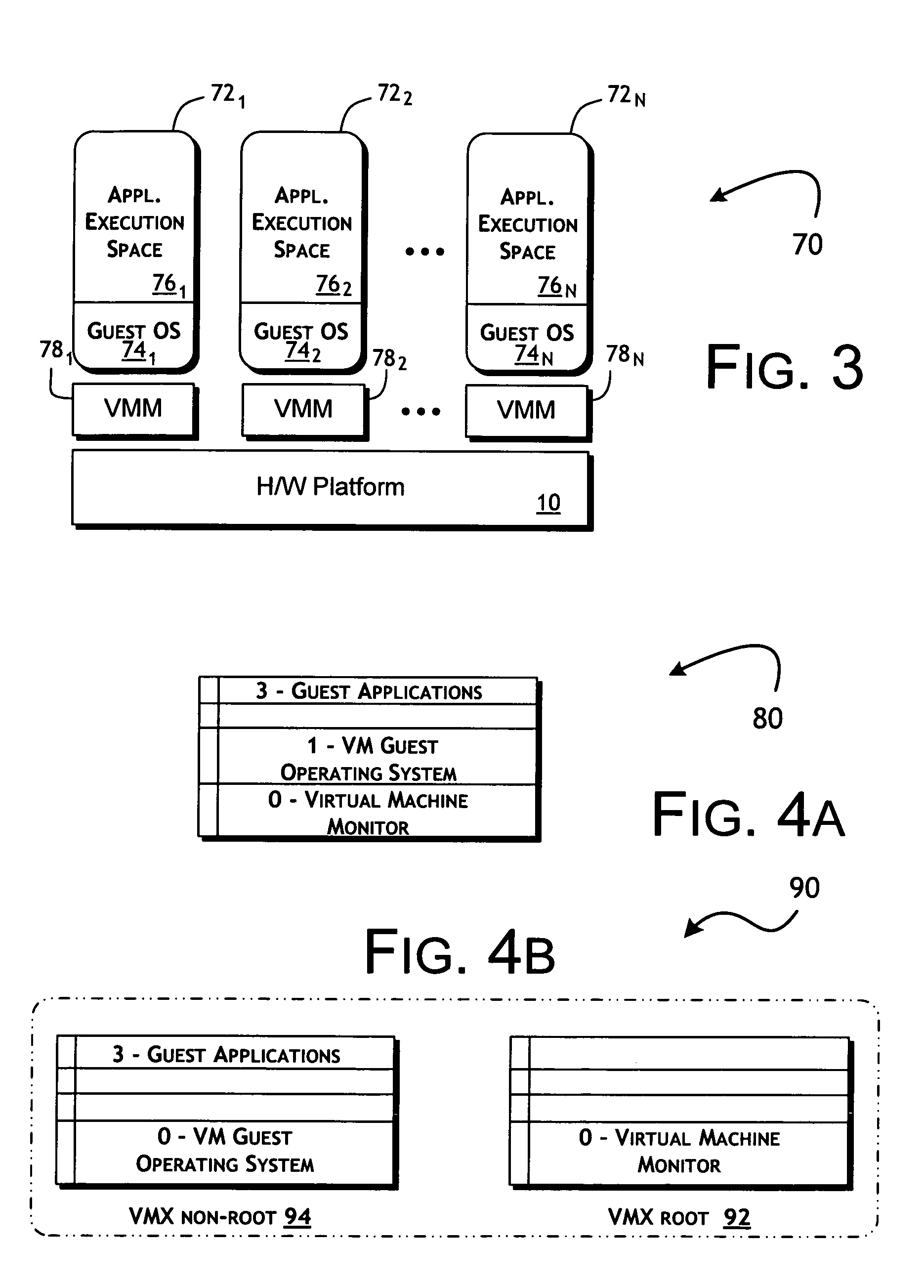Adaptive dynamic selection and application of multiple virtualization techniques
a virtualization technique and dynamic selection technology, applied in computing, instruments, electric digital data processing, etc., can solve the problems of not being able to generate privilege exceptions for activities of other standard x86 instructions, unprivileged security level, etc., to maximize the potential execution performance of the given portion, and minimize the performance cost of switching virtualization techniques
- Summary
- Abstract
- Description
- Claims
- Application Information
AI Technical Summary
Benefits of technology
Problems solved by technology
Method used
Image
Examples
Embodiment Construction
[0035]One or more embodiments of the present invention provide an optimization in selecting virtualization techniques, as implemented in a virtual machine monitor, used in support of execution of a virtual machine. For purposes of simplifying the following detailed description, like reference numerals are used to designate like parts depicted in one or more of the figures.
[0036]FIG. 1 is a block diagram of major functional components of a general virtual memory system in computer 10 suitable for implementing one or more embodiments of the present invention. As shown in FIG. 1, computer 10 includes central processor unit (CPU) 12, memory management unit (MMU) 14 containing translation look-aside buffer (TLB) 16, and random access memory (RAM) based main memory 18 providing operation storage of a plurality of page tables 20 and operating system (OS) 22. As further shown in FIG. 1, computer 10 further includes direct memory access (DMA) controller 24, peripheral devices 26, and memory ...
PUM
 Login to view more
Login to view more Abstract
Description
Claims
Application Information
 Login to view more
Login to view more - R&D Engineer
- R&D Manager
- IP Professional
- Industry Leading Data Capabilities
- Powerful AI technology
- Patent DNA Extraction
Browse by: Latest US Patents, China's latest patents, Technical Efficacy Thesaurus, Application Domain, Technology Topic.
© 2024 PatSnap. All rights reserved.Legal|Privacy policy|Modern Slavery Act Transparency Statement|Sitemap



